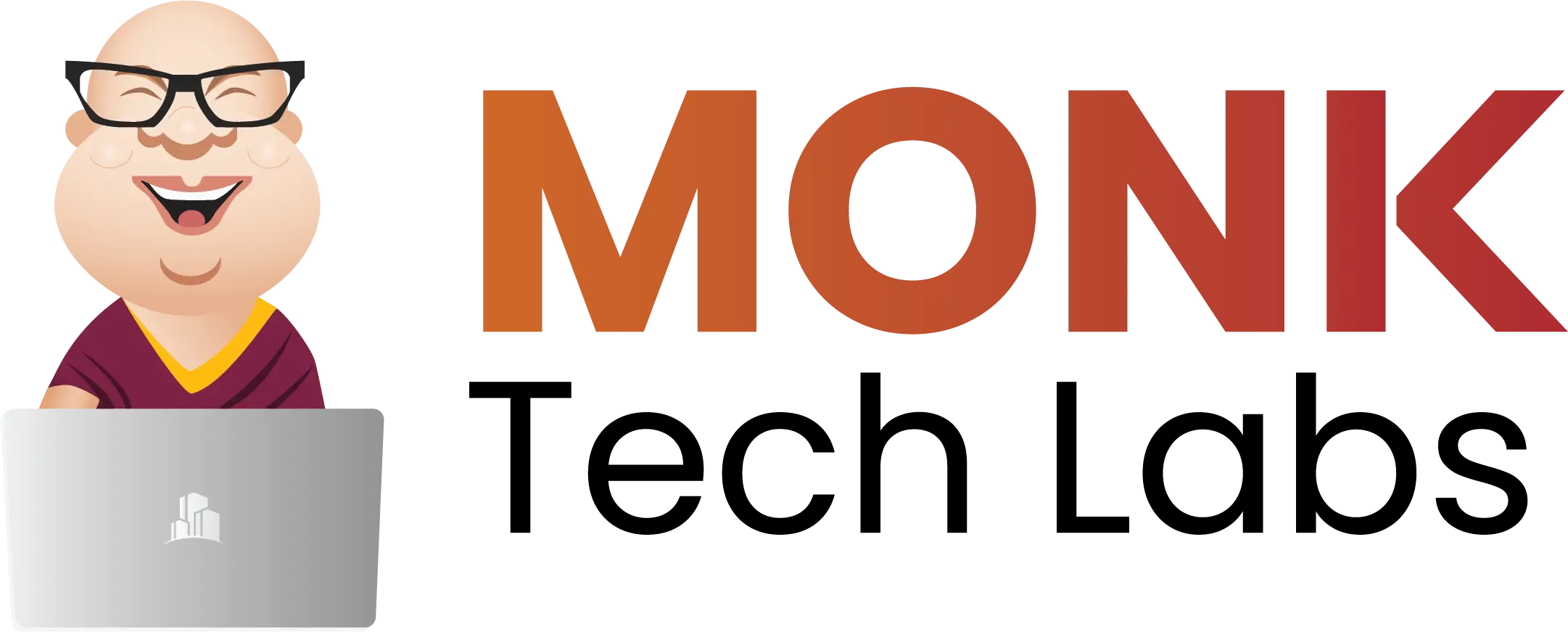Let’s start today’s article with a quick story
When I got into the real estate industry in 2013, I met one of the most interesting people I had ever met till that point in my life. His name is Amir, and he is a real estate agent in Bangalore.
I first spoke to him over the phone and fixed an appointment to meet him at his office. Little did I realize that his office was nothing by the local tea shop near his house 
His mode of running his business was chaotic, unstructured and had limited touch points with technology. But that didn’t seem to affect his income, as Amir made as much money every month as a highly trained software engineer in the city!
While Amir was an agent, there are multitudes of similar businesses who operate in a similar way – Property managers, paying guest operators, small time real estate developers, and many more.
And while Amir is in India, real estate businesses work in a very similar fashion in countries like Brazil, South Africa, Indonesia, Egypt, and many others.
Selling software to the real estate industry in emerging economies is really different from selling it to developed economies.
And that is going to be the focal point of my write up today – Selling PropTech in Emerging Economies.
For context, TheHouseMonk has active clients in over 15 countries and many of them are in emerging economies. My learnings are a summary of our iterated attempts to find product market fit in different parts of the world

Adoption of technology in real estate in emerging economies is very low. Photo by energepic.com from Pexels
5 important points to keep in mind –
1) Build mobile first solutions
Most users in emerging markets have gone from having NO computing device – Directly into having a smart phone in their pockets. They have completely skipped the desktop/laptop era of computing! These users are really comfortable with mobile apps, but struggle quite a bit with laptops, so having a browser or desktop based application might be difficult to drive mass adoption. Being a desktop based product does not normally work, so start with mobile focussed solutions.
2) Integrated solutions are better than niche apps
In developed countries, I have often noticed that consumers prefer to use multiple apps with clearly defined use cases for each app. In emerging economies, companies prefer an integrated software platform over buying unbundled software. In markets where software adoption is in its infancy, buyers don’t want to talk to multiple vendors – They want to buy everything from 1 company. So you need to make sure you have enough features when going to market.
3) Features vs UX is not a debate. You need both
Most product managers always fight on what’s important – Having a great UX or packing your product with features. Let me settle that debate – You need both, and it’s non negotiable
Remember the earlier point I mentioned about integrated software? You need to have those features to attract and bring the customer to you, but a great UX is non-negotiable as you would otherwise lose the customers you have signed after deployment.
4) Relationships are extremely important
I have noticed that in the US, typically the best product wins irrespective of the relationship between vendor and customer, but this is not the case in emerging markets. Most buyers are not used to ‘self onboarding’ themselves onto software products, and need to speak to (And possibly meet) a sales rep before they buy. It is super important that you train your sales team to speak the local language, and build a relationship with the customers.
It is always good to set up a subsidiary in these local markets to sell to these customers. Establishing partnerships with local businesses who resell your products is another great way to build your presence.
5) Subscription is better than licensing/1-time fee, transaction fee is better than subscription
Pricing is always a challenge, in any part of the world, but in emerging markets, it is trickier. Access to capital is a big problem for most businesses, so getting anyone to pay an upfront fee for, say licensing, is a tough ask. It is always better to go with a subscription fee over licensing.
Ex. If you are an IOT company which provides smart locks, and are looking to sell your products to hotels, it would be better if you charged a monthly fee to them for having provided the locks, vs charging a big 1-time fee upfront.
If you can charge customers once a transaction has happened, that’s even better!
Ex. If you are a marketplace, instead of charging brokers to list their property – see if you can charge a fee every time they get a lead, or every time they get a confirmed booking through your service.
A broader point to keep in mind is that most of these countries and companies are using software or technology for the very first time, so they need extra hand holding and deeper sales cycles to help them adopt technology, and make them truly understand the value that can be delivered.
You might have noticed that selling technology in emerging markets is a lot harder than selling in developed countries, and you might be wondering – Is it even worth it?
This blog was originally posted by our co-founder Ajay Kumar on his personal blog here.






























72 Responses
After checking out a number of the blog posts on your web site, I seriously appreciate your technique of writing a blog. I added it to my bookmark webpage list and will be checking back in the near future. Please check out my website as well and tell me what you think.
This is a topic that’s near to my heart… Best wishes! Where can I find the contact details for questions?
I needed to thank you for this excellent read!! I absolutely loved every little bit of it. I’ve got you saved as a favorite to check out new things you post…
Hi, I do think your website could possibly be having internet browser compatibility issues. When I look at your website in Safari, it looks fine however when opening in Internet Explorer, it has some overlapping issues. I merely wanted to provide you with a quick heads up! Other than that, wonderful site!
I need to to thank you for this good read!! I definitely loved every little bit of it. I’ve got you book marked to look at new stuff you post…
canadian pharmacy 24 canada pharmacy reviews global pharmacy canada
https://foruspharma.com/# mexican mail order pharmacies
mexican mail order pharmacies: п»їbest mexican online pharmacies – mexican border pharmacies shipping to usa
indian pharmacy paypal: reputable indian online pharmacy – top 10 online pharmacy in india
thecanadianpharmacy: canada pharmacy reviews – canadian pharmacies
http://foruspharma.com/# mexico pharmacies prescription drugs
canadian online pharmacy: reputable canadian pharmacy – canadian pharmacy drugs online
the canadian pharmacy: canada drugs – trusted canadian pharmacy
77 canadian pharmacy canadian pharmacy meds reviews canadian pharmacy near me
Online medicine home delivery: indian pharmacy paypal – Online medicine order
This website really has all of the information and facts I needed about this subject and didn’t know who to ask.
You’ve made this complex topic easy to understand.백링크 사이트
http://foruspharma.com/# pharmacies in mexico that ship to usa
canadian online pharmacy: canadian pharmacy phone number – canadian pharmacy no scripts
buying prescription drugs in mexico online: mexican pharmaceuticals online – buying from online mexican pharmacy
canadian medications canadian pharmacy world reviews canadian drugs online
trusted canadian pharmacy: canadian pharmacy drugs online – online canadian drugstore
п»їlegitimate online pharmacies india: india online pharmacy – Online medicine order
This is the right web site for anyone who really wants to find out about this topic. You understand a whole lot its almost tough to argue with you (not that I actually will need to…HaHa). You certainly put a brand new spin on a subject that’s been discussed for decades. Excellent stuff, just excellent.
canada pharmacy: best canadian pharmacy – canadian pharmacy online
Your writing resonates deeply with me.검색엔진최적화 중요성
I love reading a post that will make people think. Also, thanks for allowing me to comment.
п»їpaxlovid: buy paxlovid online – Paxlovid buy online
An impressive share! I have just forwarded this onto a friend who has been doing a little research on this. And he actually bought me breakfast due to the fact that I discovered it for him… lol. So let me reword this…. Thank YOU for the meal!! But yeah, thanx for spending the time to discuss this issue here on your web page.
I blog quite often and I genuinely appreciate your content. This article has truly peaked my interest. I am going to bookmark your site and keep checking for new information about once a week. I subscribed to your RSS feed as well.
https://amoxildelivery.pro/# amoxicillin price canada
This web site really has all of the info I wanted about this subject and didn’t know who to ask.
https://ciprodelivery.pro/# ciprofloxacin 500 mg tablet price
ciprofloxacin order online: buy cipro – ciprofloxacin 500 mg tablet price
Hi there! I could have sworn I’ve been to this site before but after looking at many of the posts I realized it’s new to me. Anyhow, I’m definitely delighted I discovered it and I’ll be bookmarking it and checking back frequently!
http://doxycyclinedelivery.pro/# buy doxycycline online no prescription
Hello there! This post could not be written any better! Going through this article reminds me of my previous roommate! He constantly kept preaching about this. I will send this article to him. Fairly certain he’ll have a great read. I appreciate you for sharing!
doxycycline 100 mg tablet cost: doxycycline 100mg price 1mg – doxycycline tablets australia
https://clomiddelivery.pro/# clomid buy
I was able to find good information from your blog posts.
Hi, I do think this is a great site. I stumbledupon it 😉 I’m going to return yet again since I bookmarked it. Money and freedom is the best way to change, may you be rich and continue to help other people.
https://amoxildelivery.pro/# amoxicillin 500mg buy online canada
Having read this I believed it was rather enlightening. I appreciate you taking the time and effort to put this informative article together. I once again find myself personally spending way too much time both reading and posting comments. But so what, it was still worth it!
Paxlovid buy online: paxlovid covid – paxlovid price
I was able to find good advice from your articles.
http://amoxildelivery.pro/# amoxicillin cost australia
Wonderful article! We will be linking to this particularly great content on our site. Keep up the good writing.
Howdy, There’s no doubt that your blog could be having internet browser compatibility issues. When I look at your blog in Safari, it looks fine however, when opening in IE, it’s got some overlapping issues. I merely wanted to provide you with a quick heads up! Other than that, wonderful blog!
You’ve made some decent points there. I checked on the web for additional information about the issue and found most people will go along with your views on this website.
paxlovid pharmacy: paxlovid covid – paxlovid cost without insurance
http://doxycyclinedelivery.pro/# doxycycline 150mg pill
I wanted to thank you for this wonderful read!! I definitely loved every bit of it. I have you bookmarked to look at new things you post…
https://ciprodelivery.pro/# buy ciprofloxacin
I need to to thank you for this wonderful read!! I absolutely enjoyed every little bit of it. I’ve got you bookmarked to check out new things you post…
paxlovid buy: paxlovid pill – paxlovid buy
Hello there! I simply wish to give you a huge thumbs up for the great information you have here on this post. I am coming back to your site for more soon.
where can i buy amoxicillin over the counter: order amoxicillin no prescription – buy amoxicillin 500mg capsules uk
You have made some really good points there. I checked on the net for additional information about the issue and found most people will go along with your views on this web site.
I need to to thank you for this fantastic read!! I absolutely enjoyed every little bit of it. I have you bookmarked to look at new stuff you post…
I’m amazed, I have to admit. Seldom do I encounter a blog that’s both educative and amusing, and without a doubt, you’ve hit the nail on the head. The issue is something which not enough men and women are speaking intelligently about. Now i’m very happy I came across this in my hunt for something concerning this.
I seriously love your site.. Excellent colors & theme. Did you develop this web site yourself? Please reply back as I’m trying to create my very own site and want to know where you got this from or exactly what the theme is named. Kudos.
Good blog you’ve got here.. It’s hard to find high quality writing like yours nowadays. I honestly appreciate individuals like you! Take care!!
It’s hard to find experienced people in this particular topic, but you sound like you know what you’re talking about! Thanks
Greetings! Very helpful advice within this post! It is the little changes that will make the greatest changes. Thanks for sharing!
Way cool! Some very valid points! I appreciate you penning this post plus the rest of the site is extremely good.
Wonderful article! We will be linking to this great post on our website. Keep up the good writing.
Everything is very open with a very clear description of the challenges. It was truly informative. Your website is very helpful. Thanks for sharing!
Oh my goodness! Amazing article dude! Thank you, However I am having difficulties with your RSS. I don’t understand the reason why I cannot join it. Is there anyone else having the same RSS issues? Anyone that knows the answer can you kindly respond? Thanx!
Next time I read a blog, Hopefully it doesn’t fail me just as much as this particular one. I mean, Yes, it was my choice to read through, but I actually thought you would have something useful to say. All I hear is a bunch of crying about something that you could fix if you were not too busy looking for attention.
Aw, this was an incredibly good post. Spending some time and actual effort to create a top notch article… but what can I say… I put things off a lot and don’t manage to get anything done.
I blog often and I seriously thank you for your content. This great article has really peaked my interest. I will bookmark your site and keep checking for new details about once per week. I opted in for your RSS feed as well.
Everything is very open with a really clear description of the issues. It was truly informative. Your website is very useful. Thank you for sharing!